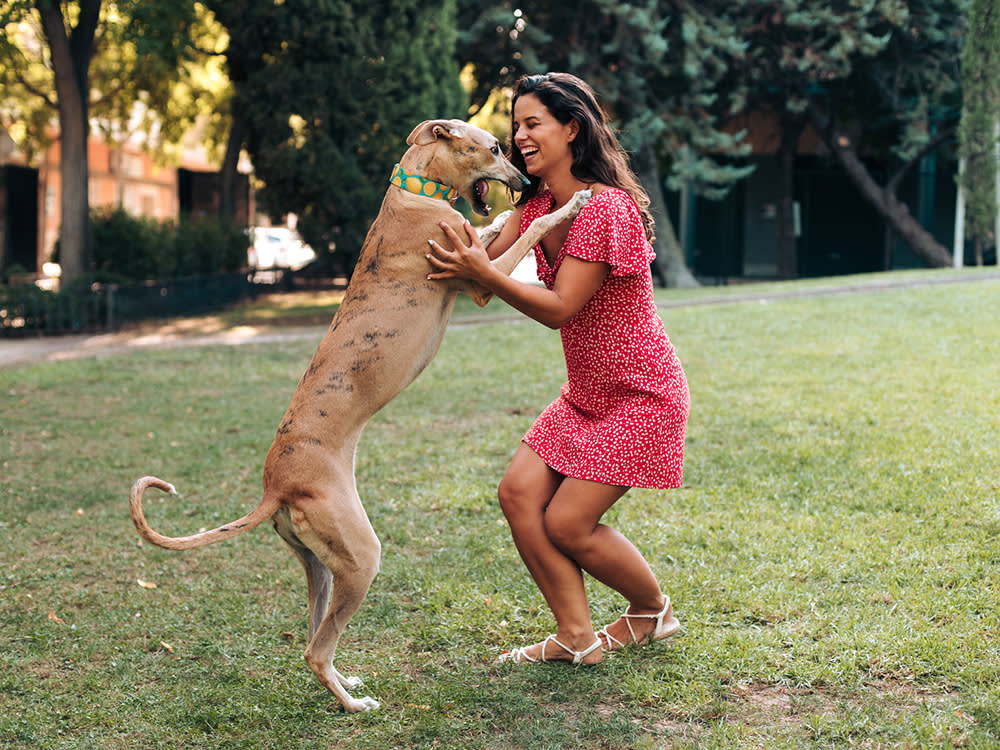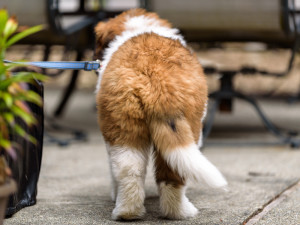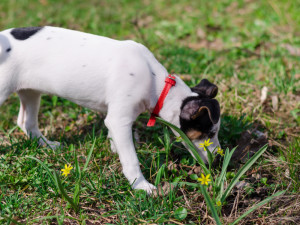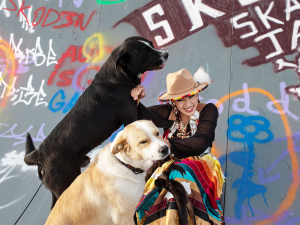How’s Your Dog Feeling? Check Their Tail
If your dog’s tail is wagging “to the left, to the left,” as Beyoncé says, it could mean they’re anxious.
Your dog has moods. This doesn’t mean they’re moody or that you should stick a mood ring on their paw. (Please, do not make your dog wear jewelry; plus everyone knows those things are bogus.) But there is a pretty clear indication of what they’re feeling in any given moment: their tail.
The next time your dog greets you when you come home, closely watch their tail. A dog’s tail speaks volumes, whether it’s rigid or swishing circularly, or moving slowly or quickly. Now, add one more mood indicator to the list: the position and direction of a dog’s tail while it wags. Scientists have discovered that a happy dog will wag harder to the right, and an anxious dog will wag harder to the left.
Trick question: All dogs are perfect! But find out which type is the best fit for you.
Left and Right Brain
In humans, it’s well documented that the brain is divided into two cerebral hemispheres — left and right — which serve different functions and control opposite sides of the body. Most animals also demonstrate a difference between “left brain” and “right brain” functions. It is believed that the left brain in animals specializes in “approach and energy enrichment,” such as finding food. The right brain specializes in “withdrawal and energy expenditure,” such as fleeing in response to fear. Because the dog’s tail is located along the body’s midline, researchers questioned whether the tail displayed emotional asymmetry.
Thirty mixed-breed dogs served as the researchers’ subjects. Each dog was put in a kennel specially fitted with cameras to capture the precise angle of the dog’s tail movement. The dog was then shown four separate stimuli — their person, a stranger, a friendly cat, and an unfamiliar, intimidating dog — for one minute each.
How much do you spend on your pet per year?
Upon sight of their person, all 30 dogs wagged their tails more strongly to the right side. After a 90-second rest period, the dogs viewed a stranger. The dogs’ tails still favored the right side, but the angle was more moderate in comparison to seeing their person. The cat elicited a bias to the right side, but it was even more subtle than when they saw the stranger. The large, unknown dog caused all of the dogs to wag their tails more to the left.
Dog Tail Position Meaning
The authors concluded that when the dog felt positive, or curious (as in the case of the cat), the tail wagged right. If the dog felt negative or apprehensive, the tail wagged left. Because the left brain controls the right side of the body, the right muscles of the tail express those good feelings — the left muscles of the tail signal caution or concern, which is controlled by the right brain.
It’s always a good idea to observe your dog’s body language, whether you’re relaxing at the dog park or waiting to see the vet. Now, thanks to your dog’s tail, you have another way to tell how they really feel.







